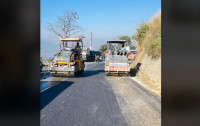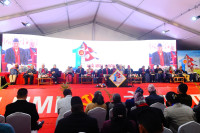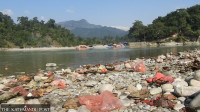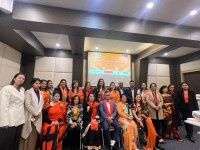National
It’s almost spring, but tourism industry is already staring at a dry season
Travel trade organisations warn of street protests if officials fail to take immediate measures to revive tourism sector which was hit the hardest by Covid-19 last year.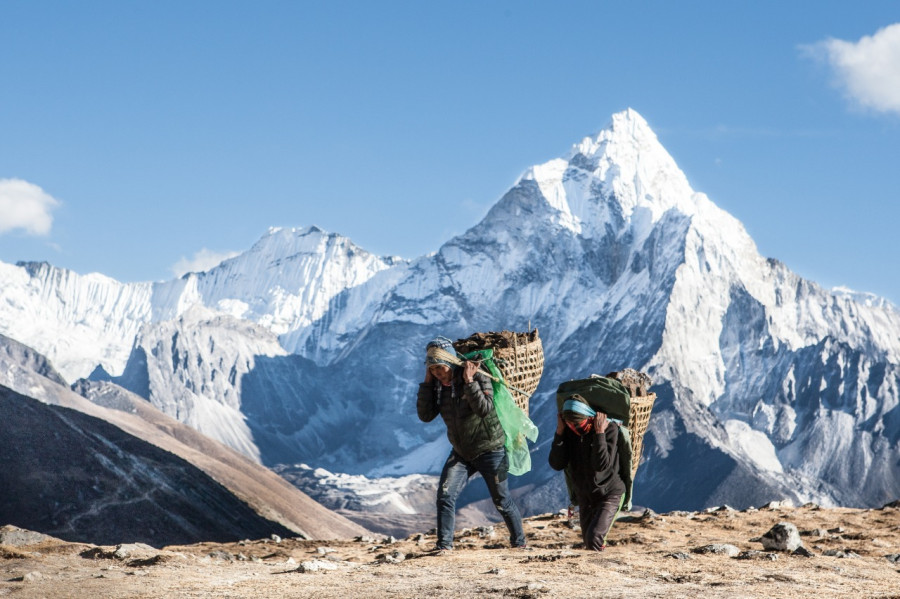
Sangam Prasain
Normally at this time of the year, trekking company owner Khum Bahadur Subedi would be busy dealing with hundreds of clients eager to walk the Himalayan trails.
His firm Unique Adventure International specialises in making arrangements for thrill seekers desiring to explore Nepal's mountains and revel in the stunning scenery.
This is when Nepal's tourism season gets going, and climbers and trekkers would be thronging the iconic Annapurna and Everest regions.
Lovers of adventure sports would be descending on Pokhara, and sightseers would be heading for the tropical jungles of Chitwan.
The hectic tourist high season lasts until May, bringing a flood of revenue to bolster the national economy and create jobs.
Covid-19 had turned the past year into a total disaster for Nepal's tourism industry. And travel traders were very hopeful that tourists would come back in the coming year.
But Subedi is seeing another disastrous year ahead. “Surviving a year with zero income is difficult. And after a year, the government is still not paying attention to the industry,” he said.
Travel trade entrepreneurs say despite opening all tourism-related activities, they are not hopeful of arrivals recovering to even 10 percent of the pre-Covid-19 levels.
Many tourism workers who had been furloughed or laid off were expecting that the tourists would come back, and that they would be recalled to their jobs this year.
Tourism entrepreneurs were also expecting to make some financial recovery.
But all plans to revive the ailing tourism industry have gone down the drain, said Subedi, who is also the president of the Trekking Agents Association of Nepal.
“The government has failed to pay heed to the problems facing the industry,” said Subedi.
Fed up with the government’s repeated assurances to assist the tourism industry, around 37 different tourism organisations on Monday announced plans to take to the streets.
They have warned that if the government fails to address the industry's grievances and charts out a plan to draw tourists, they don’t have an alternative but to protest.
Their demands include removing the five-day mandatory quarantine for foreigners who have negative PCR reports taken within 72 hours before departure, resuming the on-arrival visa facility at Kathmandu’s Tribhuvan International Airport, cancelling the $5,000 Covid-19 insurance coverage requirement to travel to Nepal and opening the border with China.
Last October, Nepal opened the door a crack for trekkers and mountaineers, nearly seven months after the country imposed a complete lockdown.
In December, the government restored all tourist visas. But on-arrival visas have been provided at Tribhuvan International Airport only to representatives and families of diplomatic missions, United Nations agencies, international organisations and non-resident Nepalis.
Travel trade entrepreneurs have submitted several dozen recommendations to facilitate tourist movement, but none has been implemented so far.
“We are really confused,” said Subedi. “If the government does not make timely intervention, we will definitely miss March-May spring tourist season this year too, the season that brings high-end mountaineers and trekkers and provides jobs to tens of thousands of people, particularly in the mountain region.”
Travel trade entrepreneurs are asking why the government is imposing quarantine for foreign tourists when tens of thousands of political demonstrators are allowed to freely march through the streets.
Demonstrations and counter-demonstrations have been erupting across Nepal with the two factions of the ruling Nepal Communist Party engaging in shouting matches following the dissolution of Parliament by Prime Minister Oli on December 20.
The move has raised the spectre of political instability, the biggest bane of the tourism industry. Just as spring is here, a good season for the tourism industry, the season of protests is back too.
From hotels to airlines, and from porters to high altitude climbing guides, all are cautiously waiting for the spring season, which normally accounts for one-third of the 1.2 million annual arrivals.
The coronavirus crisis resulted in an 80.78 percent drop in tourist inflow in 2020, making it the worst year-on-year fall since Nepal opened to the outside world in the 1950s.
According to the statistics of the Department of Immigration, only 230,085 foreign tourists visited Nepal last year, about the same number that came in 1986. Most of them arrived before the country slapped entry restrictions on March 20.
The year 2021 started on a disappointing note. Nepal received less than 9,000 foreign visitors in January.
According to a Nepal Tourism Board survey, nearly 300,000 people directly employed in the tourism industry lost their jobs during the pandemic. Among them, more than 88,000 were in restaurants, followed by 67,000 in hotels and 51,000 in the trekking and mountaineering sectors.
“Tourists are willing to come. We have a huge number of inquiries from them, but the process to come to Nepal is very difficult,” said Achyut Guragain, president of the Nepal Association of Tour and Travel Agents, one of the oldest tourism associations in Nepal.
Guragain said that on-arrival visas are still restricted for foreign tourists which means they have to go to Nepal’s embassies and diplomatic missions abroad to get the visas.
“There are around 37 embassies and diplomatic missions abroad while tourists come to Nepal from 205 countries. This shows how serious the government is about reviving the tourism industry,” said Guragain.
Three weeks ago, Tourism Minister Bhanu Bhakta Dhakal had said that Nepal was considering allowing unrestricted entry to vaccinated tourists in a bid to boost the morale of the moribund tourism industry ahead of the upcoming spring peak season.
There would be no quarantine and coronavirus insurance requirements, and all visitors would need to produce is proof of having had the shots. Many countries have started issuing vaccine certificates or vaccine passports to international travellers.
Dhakal said the ministry had also recommended resuming issuing on-arrival visas to all tourists at Kathmandu's Tribhuvan International Airport.
According to ministry officials, they have tabled these proposals at Cabinet meetings on different occasions, but with no outcome.
According to Nepal Tourism Board officials, most of the embassies and missions do not even pick up the phones at their offices.
“Encouraging tourists to visit Nepal is thus a far cry,” said a board official who did not want to be named.
The government still bars free independent travellers from going trekking.
Foreign visitors have to come in a group, and they need to have recommendations of trekking companies if they want to walk the mountain trails, according to board officials.
The Chinese border crossings are still closed to foreign visitors. “There are no flights connecting China; we don’t know why,” said Guragain. “The government is killing tourism.”
According to Binayak Shah, vice-president of Hotel Association Nepal, they have been receiving 15,000 to 20,000 Chinese tourists annually during Chinese New Year except in 2020.
This year, Chinese New Year started on February 12, but there were almost zero travellers from the northern neighbour as flights have still not resumed, according to Shah.
“Spring is coming, and we still don’t have any plans,” said Shah. “As of now, advance bookings are disappointing.”




 19.12°C Kathmandu
19.12°C Kathmandu

